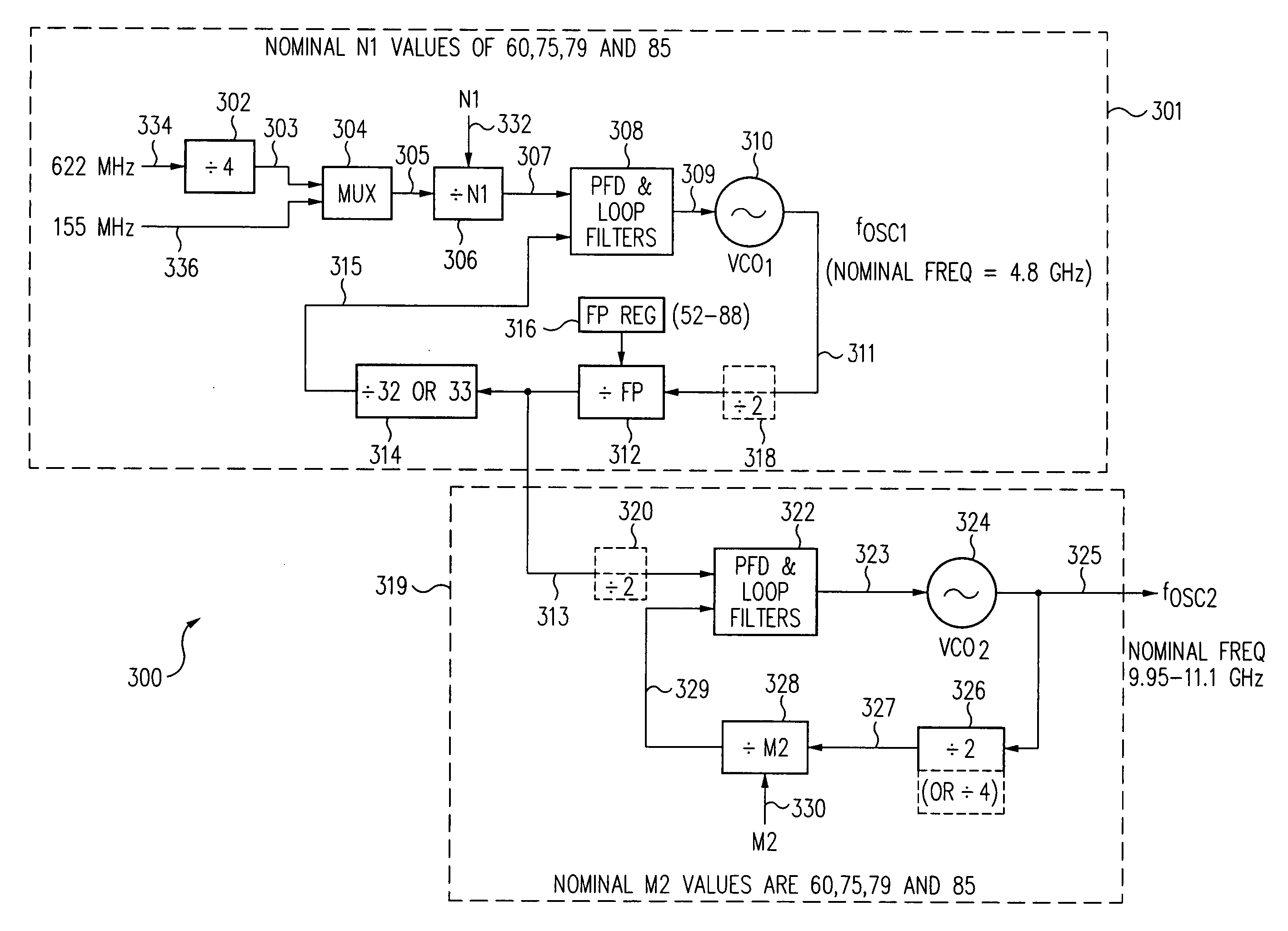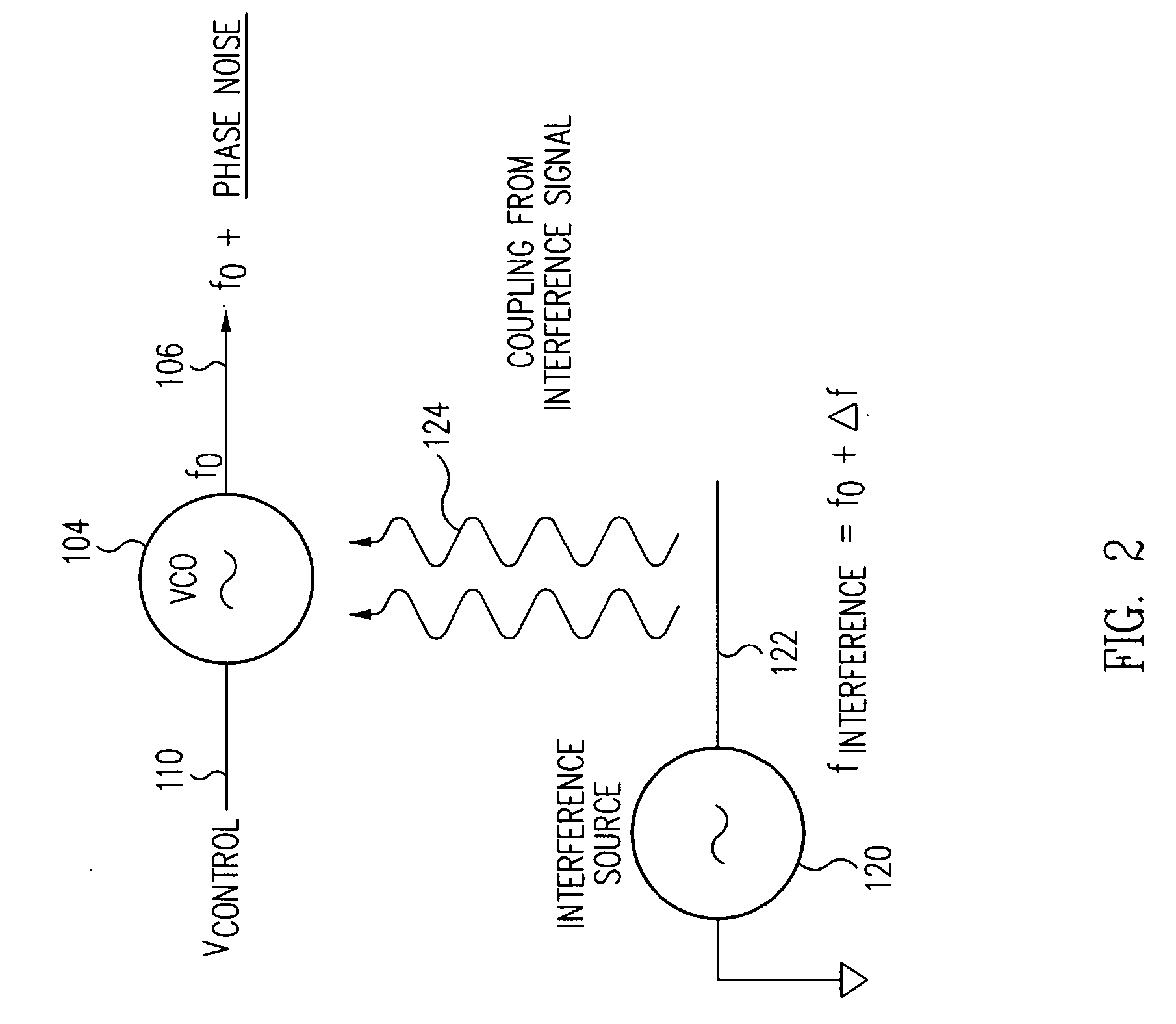Configurable circuit structure having reduced susceptibility to interference when using at least two such circuits to perform like functions
a circuit structure and configuration technology, applied in the direction of instruments, generating/distributing signals, pulse techniques, etc., can solve the problems of reducing spurious phase noise of the pll output signal, and spurious tones in the phase noise spectrum of the vco, so as to reduce the intended clock bandwidth, reduce the jitter removal capabilities of the system, and increase the phase noise component
- Summary
- Abstract
- Description
- Claims
- Application Information
AI Technical Summary
Benefits of technology
Problems solved by technology
Method used
Image
Examples
Embodiment Construction
[0024] Referring now to FIG. 3, a printed wiring board 152 is shown containing several functional circuit blocks. Each of two such circuit blocks 154 and 156 are depicted as providing a specific function, here represented as a function responsive to a respective input signal IN1, IN2, and generating a corresponding output signal OUT1, OUT2. As shown, the Specific Function circuit block 154 receives an IN1 signal conveyed on node 160 and generates a corresponding output signal OUT1 conveyed on node 162 in accordance with the Specific Function. Similarly, the Specific Function circuit block 156 receives an IN2 signal conveyed on node 164 and generates a corresponding output signal OUT2 conveyed on node 166 in accordance with the Specific Function.
[0025] If these two circuit blocks 154, 156 are placed in close proximity to each other, one or more of the signals related to one of the circuit blocks may couple to the other circuit block, as indicated by coupling 168 from circuit block 1...
PUM
 Login to View More
Login to View More Abstract
Description
Claims
Application Information
 Login to View More
Login to View More - R&D
- Intellectual Property
- Life Sciences
- Materials
- Tech Scout
- Unparalleled Data Quality
- Higher Quality Content
- 60% Fewer Hallucinations
Browse by: Latest US Patents, China's latest patents, Technical Efficacy Thesaurus, Application Domain, Technology Topic, Popular Technical Reports.
© 2025 PatSnap. All rights reserved.Legal|Privacy policy|Modern Slavery Act Transparency Statement|Sitemap|About US| Contact US: help@patsnap.com



